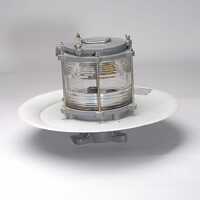Categories
Tags
-
#LED Submarine Navigation Lights
#Stealth Major Light
#LED Marine Cabin Lights
#LED Marine Navigation Signal Lights,Marine Spotlights,Marine Searchlight,
#Explosion-proof fire Emergency Lights
#LED Marine Navigation Signal Lights
#Explosion-proof Fluorescent Pendant Lights
#Marine Reading Lights
#Marine Navigation Lights
#LED Light
#LED Marine Lights
#Marine LED Lights
#Marine Searchlight Bulb
#Marine Searchlights
#Explosion Proof Lighting
#LED explosion proof lighting
#Marine Waterproof Switch and Sockets
#Boat Cabin Lighting
#Marine Spotlights
#Marine Floodlights
#marine cabin lighting
#LED Soft Light Strips
#Marine Navigational Lights
#f Marine Searchlights
#Morse Code Signal Light
#Ship Stern Lights
#Ship Cabin Lighting Fixtures
#LED Marine searchlights
#Explosion Proof Lights
#marine Explosion Proof Lights
#Explosion-proof lights
#Navigation Lights
#Marine Lighting
#CCS Certification
#LED Explosion Proof Flood Lights
#Installing Marine Searchlights
#Marine Explosion-Proof Light
#marine searchlight
#LED marine searchlight
#High-Power Marine Searchlights
#Yushuo
#Marine Light
Archives
The Critical Role of Morse Code Lights in Maritime Rescue
-
In the vast and unpredictable maritime environment, effective communication can be a matter of life and death. Morse code lights, despite being one of the earliest forms of electronic communication, continue to play a vital role in modern maritime rescue operations. This article will delve into the multifaceted functions of Morse code lights, highlighting their significance in various maritime scenarios.

Historical Context and Basic Principles
Morse code was invented in the 1830s by Samuel Morse and quickly became a universal communication tool. It uses a series of dots (short signals) and dashes (long signals) to convey messages, making it adaptable for use in sound, light, and radio transmissions. In maritime navigation, Morse code lights became synonymous with safety and efficient communication, allowing vessels to signal distress or relay information across long distances.
Morse code lights are systems that transmit messages using flashes of light to represent the dots and dashes of Morse code. These lights can be part of signal lamps or searchlights and can be operated manually by a trained signaler using a shutter or button to create flashes, or automatically using modern LED or xenon lights programmed to emit Morse code messages.
Applications in Modern Maritime Rescue
Distress Signaling
One of the most critical applications of Morse code lights is in distress signaling. In emergencies, especially when radio communication fails, Morse code lights can send out the universally recognized “SOS” signal (··· — — ···), which is a cornerstone of maritime safety. This signal can be picked up by other vessels or shore-based rescue units, facilitating a swift response.
Ship-to-Ship Communication
In areas where radio interference or language barriers exist, Morse code lights allow vessels to exchange essential information. This can include details about a ship’s course, speed, or intentions, which are crucial for avoiding collisions and ensuring safe navigation.
Ship-to-Shore Signaling
Ports and harbors often use Morse code lights to guide vessels during docking or in low-visibility conditions. These lights can provide critical navigational instructions, ensuring that ships can safely navigate into harbors even in challenging weather.
Navigational Aid
Lighthouses and navigational buoys sometimes employ Morse code light patterns to convey location-specific signals to nearby vessels. These signals can warn of hazards, indicate safe passages, or provide other navigational information.
Military and Covert Operations
In naval operations, Morse code lights are used for silent communication to avoid detection by hostile forces. This method of communication is particularly valuable in covert operations where stealth is paramount.
Advantages of Morse Code Lights
Reliability
Morse code lights function independently of complex systems, making them dependable during power outages or equipment failures. Their simplicity means they require minimal technical infrastructure, ensuring they can be used in a wide range of situations.
Simplicity
The basic nature of Morse code makes it easy to operate and interpret. This simplicity allows it to be understood and transmitted even in challenging conditions, making it a timeless asset in maritime communication.
Versatility
Morse code lights can be used in various settings, from small boats to large commercial vessels. Their adaptability ensures they remain relevant across different types of maritime operations.
Compatibility
Morse code is universally understood, overcoming language and technical barriers in international waters. This compatibility ensures that ships from different countries can communicate effectively in emergencies.
Technological Advancements
Modern technology has enhanced the functionality and efficiency of Morse code lights. High-efficiency LED lights offer brighter and more energy-efficient signaling compared to traditional incandescent bulbs. Automated systems can pre-program signals, reducing human error and speeding up communication in critical scenarios. Some systems even integrate with GPS to ensure precise timing and location-specific signaling.
Challenges and Limitations
Despite their advantages, Morse code lights face some challenges. Operators require training to send and decode messages effectively, and visibility can be hindered by fog, rain, or high waves. Additionally, the prevalence of advanced communication systems has led to a decline in Morse code proficiency among modern mariners.
The Future of Morse Code Lights
As maritime safety evolves, Morse code lights are expected to maintain their relevance as a reliable backup system. Integration with digital tools and automation ensures that Morse code remains a vital component of marine navigation lighting systems, bridging the gap between traditional methods and modern technology.
Conclusion
Morse code lights, a time-tested maritime communication tool, continue to serve as a critical backup and supplemental system in marine navigation. Their simplicity, reliability, and adaptability ensure their role remains relevant in safeguarding lives and vessels at sea. Whether signaling distress or guiding ships in adverse conditions, Morse code lights embody the enduring value of straightforward communication in a high-tech world.

